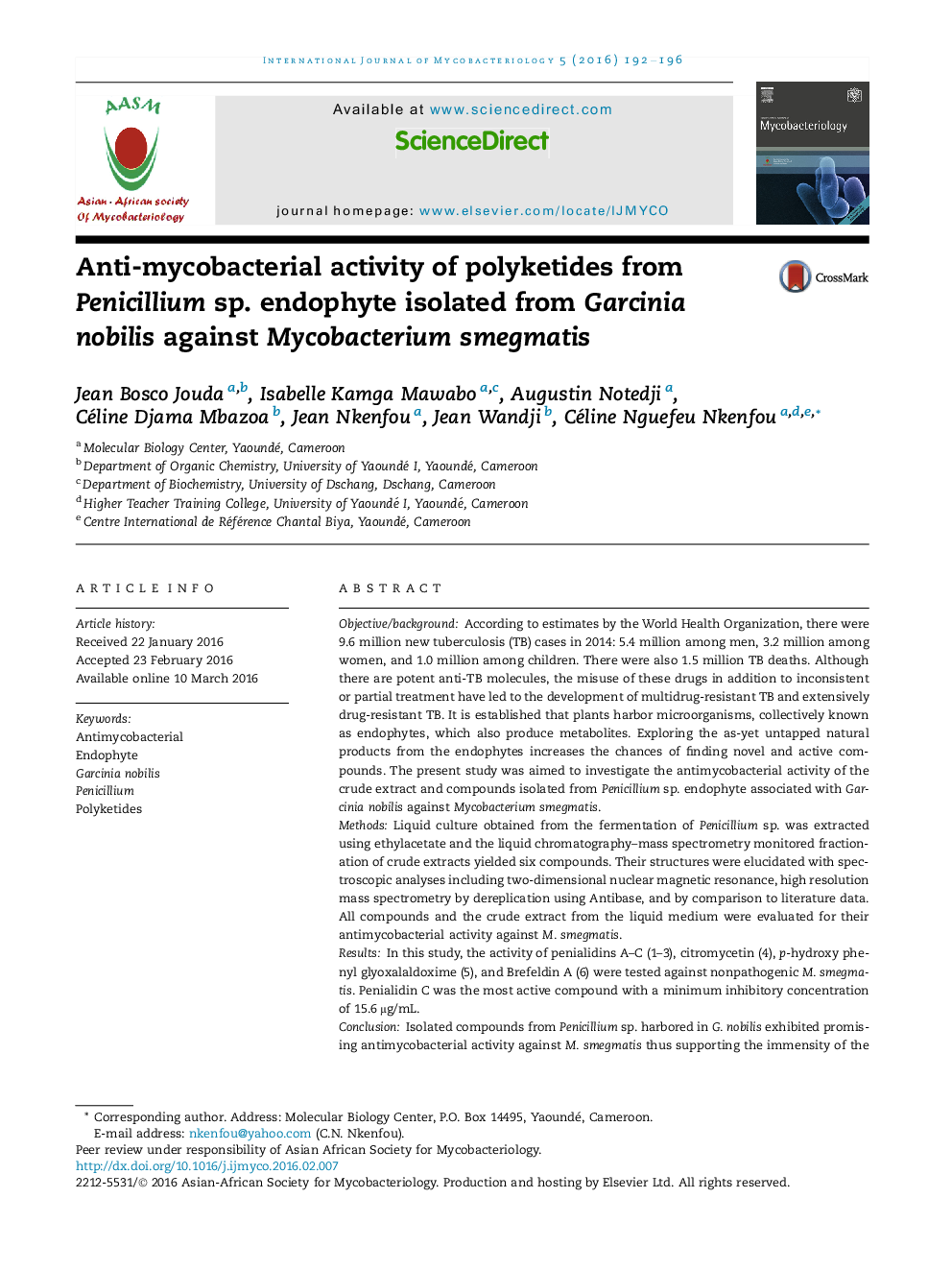| Article ID | Journal | Published Year | Pages | File Type |
|---|---|---|---|---|
| 3404935 | International Journal of Mycobacteriology | 2016 | 5 Pages |
Objective/backgroundAccording to estimates by the World Health Organization, there were 9.6 million new tuberculosis (TB) cases in 2014: 5.4 million among men, 3.2 million among women, and 1.0 million among children. There were also 1.5 million TB deaths. Although there are potent anti-TB molecules, the misuse of these drugs in addition to inconsistent or partial treatment have led to the development of multidrug-resistant TB and extensively drug-resistant TB. It is established that plants harbor microorganisms, collectively known as endophytes, which also produce metabolites. Exploring the as-yet untapped natural products from the endophytes increases the chances of finding novel and active compounds. The present study was aimed to investigate the antimycobacterial activity of the crude extract and compounds isolated from Penicillium sp. endophyte associated with Garcinia nobilis against Mycobacterium smegmatis.MethodsLiquid culture obtained from the fermentation of Penicillium sp. was extracted using ethylacetate and the liquid chromatography–mass spectrometry monitored fractionation of crude extracts yielded six compounds. Their structures were elucidated with spectroscopic analyses including two-dimensional nuclear magnetic resonance, high resolution mass spectrometry by dereplication using Antibase, and by comparison to literature data. All compounds and the crude extract from the liquid medium were evaluated for their antimycobacterial activity against M. smegmatis.ResultsIn this study, the activity of penialidins A–C (1–3), citromycetin (4), p-hydroxy phenyl glyoxalaldoxime (5), and Brefeldin A (6) were tested against nonpathogenic M. smegmatis. Penialidin C was the most active compound with a minimum inhibitory concentration of 15.6 μg/mL.ConclusionIsolated compounds from Penicillium sp. harbored in G. nobilis exhibited promising antimycobacterial activity against M. smegmatis thus supporting the immensity of the potential of antimycobacterial drug discovery from endophytes from medicinal plants. Penialidin C could further be investigated for antimycobacterial drug development.
